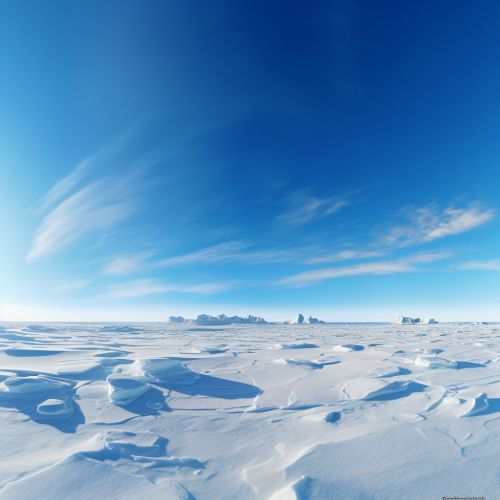Biogeography of Microbial Life in Polar Ice Caps
Introduction
Biogeography is the study of the distribution of species and ecosystems in geographic space and through geological time. In the context of microbiology, it involves the study of microbial life and its distribution on Earth. One of the most extreme and least explored environments on our planet are the polar ice caps. This article delves into the biogeography of microbial life in polar ice caps, exploring the types of organisms that inhabit these extreme environments, the adaptations they have developed to survive, and the implications of their existence for our understanding of life on Earth and beyond.
The Polar Ice Caps
The polar ice caps, located in the Arctic and Antarctica, are some of the most extreme environments on Earth. They are characterized by sub-zero temperatures, high winds, and a lack of liquid water for most of the year. Despite these harsh conditions, a variety of microbial life has been discovered within the ice caps, demonstrating the resilience and adaptability of life.


Microbial Life in Polar Ice Caps
Microbial life in polar ice caps is diverse, including bacteria, archaea, and eukaryotes such as algae and fungi. These organisms have developed a range of adaptations to survive in the extreme conditions of the ice caps.
Bacteria
Bacteria are the most abundant and diverse group of microorganisms found in polar ice caps. They are capable of surviving in the extreme cold and low nutrient conditions of the ice caps due to their ability to enter a state of dormancy, where they reduce their metabolic activity to a minimum. This allows them to survive for long periods without nutrients or energy sources.
Archaea
Archaea are another group of microorganisms found in polar ice caps. Like bacteria, they are capable of surviving in extreme conditions due to their ability to enter a state of dormancy. Archaea in polar ice caps are primarily from the group known as methanogens, which produce methane as a byproduct of their metabolism. This has implications for our understanding of climate change, as methane is a potent greenhouse gas.
Eukaryotes
Eukaryotic microorganisms, including algae and fungi, are also found in polar ice caps. Algae are capable of photosynthesis, and thus play a crucial role in the carbon cycle of these environments. Fungi, on the other hand, are primarily decomposers, breaking down organic material and recycling nutrients within the ice cap ecosystem.
Adaptations to Extreme Conditions
Microorganisms in polar ice caps have developed a range of adaptations to survive in these extreme environments. These include the ability to enter a state of dormancy, the production of antifreeze proteins to prevent ice crystal formation, and the ability to repair DNA damage caused by high levels of UV radiation.
Implications for Astrobiology
The existence of microbial life in polar ice caps has significant implications for astrobiology, the study of the potential for life beyond Earth. The conditions in polar ice caps are similar to those on other planets and moons in our solar system, such as Mars and Europa. The fact that life can survive in these conditions on Earth suggests that it may also be possible on other worlds.
